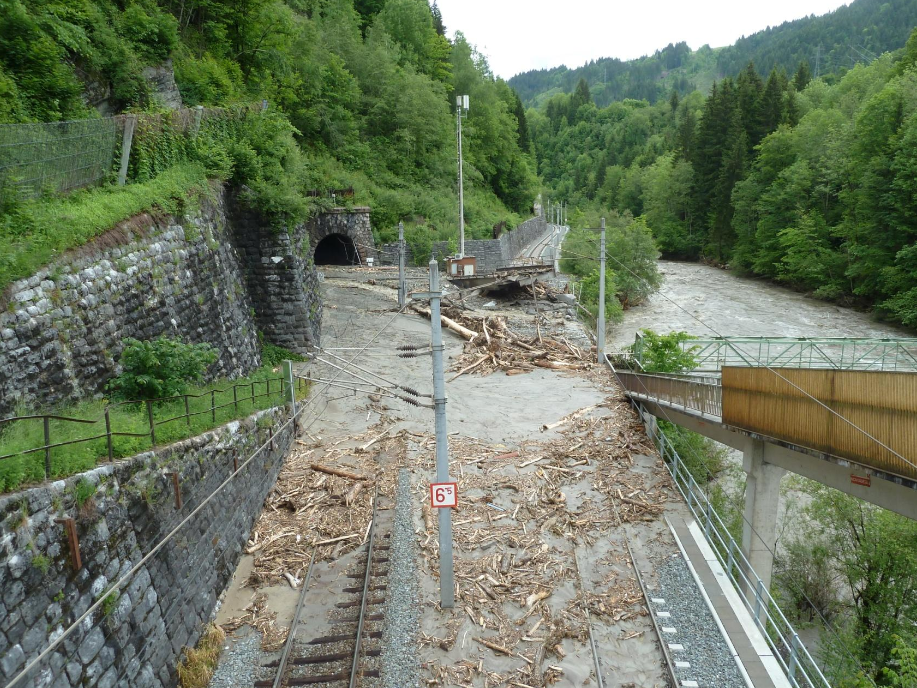The harsh mountainous nature of the Eastern Alps, in which around 65% of the national territory of Austria is situated, poses a particular challenge to railway transport planning and management. Relief and steep slopes limit the space usable for permanent settlements and infrastructure. Hence, railway lines often follow floodplains or are located along steep unsteady slopes, which considerably exposes them to flooding and in particular to alpine hazards, e.g. debris flows, rock falls, avalanches or landslides. As a result, railway infrastructure and operation has been repeatedly impacted by alpine hazards. For instance, several coaches of an intercity train derailed at the Masonbach torrent (Vorarlberg) on 11th August 1995, following a debris flow event that had destroyed a bridge. Three people were killed, 17 people were heavily injured and the track had to be closed for almost one week. Also in June 2013, floods and debris flow events caused substantial damage to the railway infrastructure. The national railway operator ÖBB Infra AG reported losses of about €75 million to its railway network.
The majority of alpine hazards are triggered by extreme/severe (hydro-) meteorological conditions such as heavy precipitation, rapid snow melt or extreme temperatures. In the future, the risk from Alpine hazards could significantly increase due to the impact of climate change. For instance, the number of very intense rainfall events could increase by 36% in the Alpine areas and 70% in the lowlands of the country (between the reference period 1961–1990 and the projection period 2011–2040; Kellermann et al. 2016).
The Austrian Federal Railways (ÖBB Infra AG), along with partners from civil society, the private sector and the government, are left with the challenging mandate to assess risks, take preventive measures, and ensure the safe and continuous operation of the network. One risk reduction strategy followed is the implementation of structural protection measures, such as dikes and embankments. In this respect, prioritization of measures and issues of cost-sharing with other governmental stakeholders is a challenge. At the same time, the implementation of structural measures against alpine hazards in Austria – with its approximately 5,000 torrents and 3,800 avalanche paths – is often not feasible for both economic reasons and aspects of nature and landscape protection. Since technical measures are thus limited in ensuring a commensurate level of safety for railway operations in the alpine topography, there is a strong need for additional (non-structural) risk reduction measures, such as weather monitoring and early warning.



